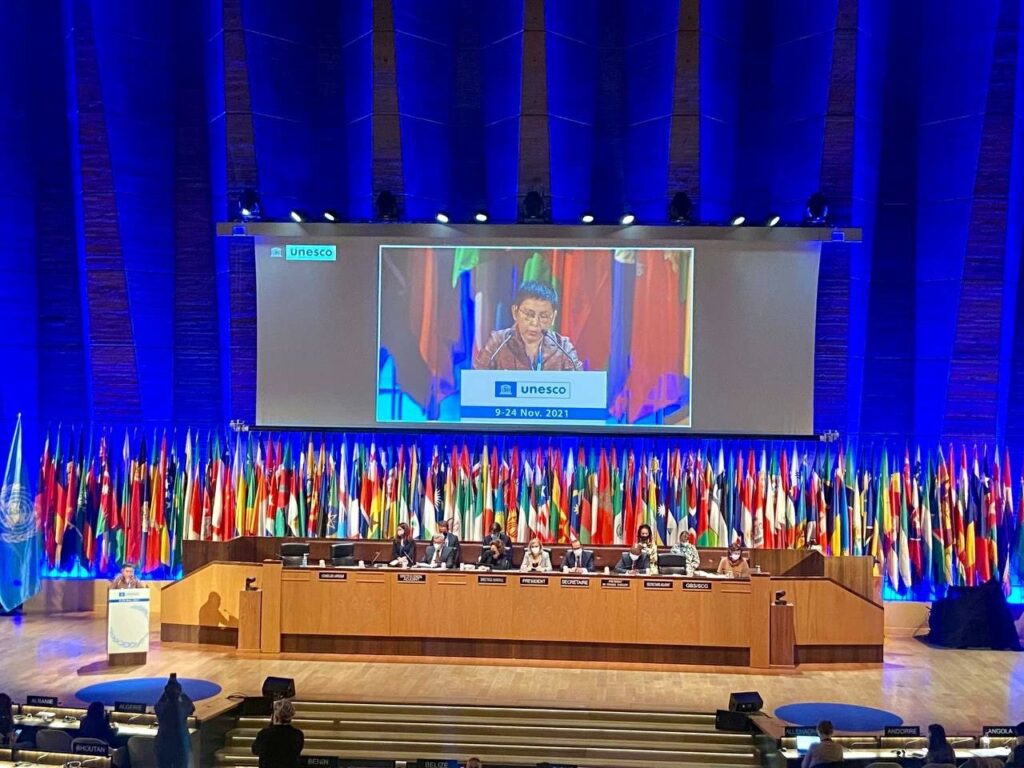- ញត្តិគាំទ្ររបស់ថ្នាក់ដឹកនាំ មន្រ្តី បុគ្គលិក ភ្នាក់ងារ ពលករ និងឆ្មាំនៃអាជ្ញាធរជាតិអប្សរា ចំពោះសារពិសេសរបស់សម្ដេចអគ្គមហាសេនាបតីតេជោ ហ៊ុន សែន ប្រធានព្រឹទ្ធសភានៃព្រះរាជាណាចក្រកម្ពុជា លើការអនុវត្តកម្មវិធី និងគម្រោងក្រោមក្របខណ្ឌនៃតំបន់ត្រីកោណអភិវឌ្ឍ កម្ពុជា-ឡាវ-វៀតណាម (CLV-DTA)- 26 July 2024
- អាជ្ញាធរជាតិអប្សរា ជួសជុលពង្រឹងតួប៉ម A នៃប្រាសាទគោកពោធិ៍ -APSARA National Authority to repair and strengthen Tower A of Kork Po Temple- 26 July 2024
- ក្រុមយុវជនអ្នកវិទ្យាសាស្ត្រវ័យក្មេង១៣ប្រទេសចូលរួមដាំកូនឈើជានិមិត្តរូបនៅតំបន់រមណីយដ្ឋានអង្គរ -A group of young scientists from 13 countries participated in a tree-planting program in the Angkor area- 25 July 2024
- អ្នកជួសជុលប្រាសាទបុរាណជំនាន់ថ្មី ចង់ឱ្យស្នាដៃដូនតានៅគង់វង្សគ្រប់ជំនាន់ -The New Generation of Ancient Temple Restorers: A Legacy for Future Generations- 25 July 2024
- សកម្មភាពលោកជំទាវបណ្ឌិតសភាចារ្យ ភឿង សកុណា ប្រធានគណៈប្រតិភូកម្ពុជាក្នុងកិច្ចប្រជុំលើកទី៤៦នៃគណៈកម្មាធិការបេតិកភណ្ឌពិភពលោក -The activities of H.E. Dr. PHOEURNG Sackona, Chair of the Cambodian delegation at the 46th Session of the World Heritage Committee- 23 July 2024
APSARA NATIONAL AUTHORITY - SIEM REAP - KINGDOM OF CAMBODIA
World Heritage Committee Decisions on Angkor

Angkor is one of the most important archaeological sites in South-East Asia. Stretching over some 400 km2, including forested area, Angkor Archaeological Park contains the magnificent remains of the different capitals of the Khmer Empire, from the 9th to the 15th century. They include the famous Temple of Angkor Wat and, at Angkor Thom, the Bayon Temple with its countless sculptural decorations. UNESCO has set up a wide-ranging programme to safeguard this symbolic site and its surroundings.
Angkor, in Cambodia’s northern province of Siem Reap, is one of the most important archaeological sites of Southeast Asia. It extends over approximately 400 square kilometres and consists of scores of temples, hydraulic structures (basins, dykes, reservoirs, canals) as well as communication routes. For several centuries Angkor, was the centre of the Khmer Kingdom. With impressive monuments, several different ancient urban plans and large water reservoirs, the site is a unique concentration of features testifying to an exceptional civilization. Temples such as Angkor Wat, the Bayon, Preah Khan and Ta Prohm, exemplars of Khmer architecture, are closely linked to their geographical context as well as being imbued with symbolic significance. The architecture and layout of the successive capitals bear witness to a high level of social order and ranking within the Khmer Empire. Angkor is therefore a major site exemplifying cultural, religious and symbolic values, as well as containing high architectural, archaeological and artistic significance.
The park is inhabited, and many villages, some of whom the ancestors are dating back to the Angkor period are scattered throughout the park. The population practices agriculture and more specifically rice cultivation.
Criterion (i): The Angkor complex represents the entire range of Khmer art from the 9th to the 14th centuries, and includes a number of indisputable artistic masterpieces (e.g. Angkor Wat, the Bayon, Banteay Srei).
Criterion (ii): The influence of Khmer art as developed at Angkor was a profound one over much of South-east Asia and played a fundamental role in its distinctive evolution.
Criterion (iii): The Khmer Empire of the 9th-14th centuries encompassed much of South-east Asia and played a formative role in the political and cultural development of the region. All that remains of that civilization is its rich heritage of cult structures in brick and stone.
Criterion (iv): Khmer architecture evolved largely from that of the Indian sub-continent, from which it soon became clearly distinct as it developed its own special characteristics, some independently evolved and others acquired from neighboring cultural traditions. The result was a new artistic horizon in oriental art and architecture.
For more information, please visit UNESCO World Heritage Center Official Website :
https://whc.unesco.org/en/list/668/


